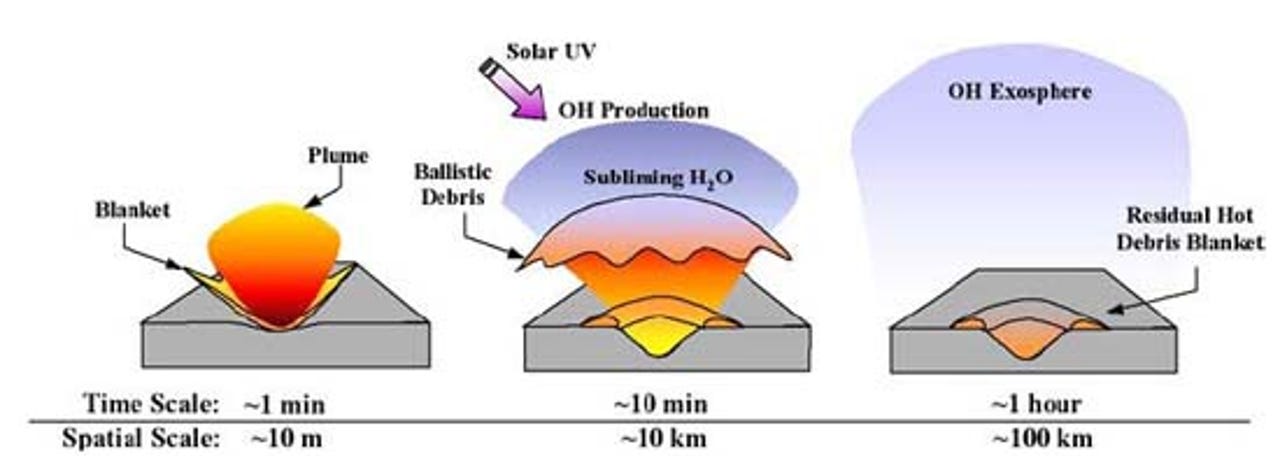Gallery: NASA ready to shoot the moon

As it races toward the moon, the Lunar CRater Observing and Sensing Satellite (LCROSS) will launch the still-attached upper stage of the Atlas V Centaur rocket to strike the moon first and create a plume of debris that LCROSS will analyze for about four minutes before it gets cratered and creates its own plume. The greatest hope is that scientists will discover water as they search the debris from both impacts.
The crash is not expected to be seen from Earth by the naked eye or binoculars, but is expected to be visible with Earth- and space-based telescopes 10-to-12 inches and larger.
Credit: NASA
Excellent lighting conditions are expected in the Mountain, Pacific, Alaska and Hawaii time zones. In the Central time zone, the best viewing will be west of the Mississippi, and daybreak in the Eastern time zone will prevent viewing the plume.
Since the Sun rises no more than 1.6 degrees above the horizon at the moon's poles, shallow craters can have permanently shadowed floors where water ice can exist.

As it approaches the moon, LCROSS will release the Centaur then brake and turn 180 degrees to allow the instrument payload to capture the Centaur impact. It will have four minutes after the Centaur crashes to collect data and transmit it back to earth before it is vaporized.
Credit: P. H. Schultz, Brown University and AVGR.
Credit: NASA
LCROSS and the Centaur were launched on June 18,2009.
The flight plan.
LCROSS views the Earth on August 17, 2009 from a distance of more than 300,000 miles.
LCROSS (the streak in the center) as photographed from Earth.
?Credit: NMSU/MSFC
The impact site.
A closer look at the impact site.
Even closer.
This image shows the candidate craters for the crashing site - a crater called Cabeus (cricled) was selected.
Credit: NASA
The original landing site was a crater called Cabeusa A, however, last week NASA switched to crater Cabeusa (proper) after it was determined that it contained a small valley that would allow sunlight to better illuminated the crash.
A look at the LCROSS probe and the instruments that will analyze the crash of the Centaur probe. The instruments include two near-infrared spectrometers, a visible light spectrometer, two mid-infrared cameras, two near-infrared cameras, a visible camera, and a visible radiometer.
A chart of the instruments.
The NASA Ames Vertical Gun Range (AVGR) at NASA Ames Research Center, Moffett Field, CA.
Credit: P. H. Schultz, Brown University and AVGR
At the lab, LCROSS is being prepared for shipping.
Cleaning LCROSS.
The first stage of LCROSS's journey is aboard a FedEx truck.
The Lunar Reconnaissance Orbiter (LRO) recently began taking high-resolution images of the lunar surface.
The LRO last week took this photograph of American space junk left on the moon, the landing site of Eagle from Apollo 11.
The Atlas Centaur at the launch site.